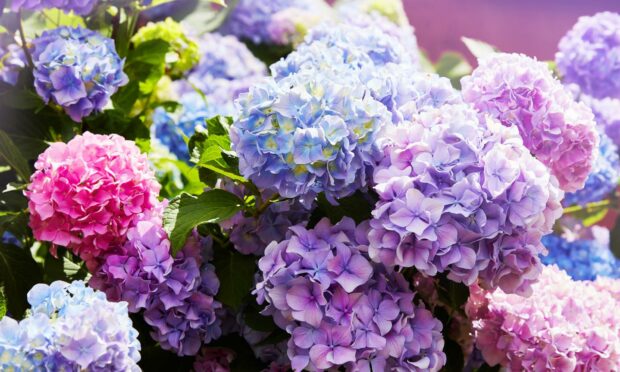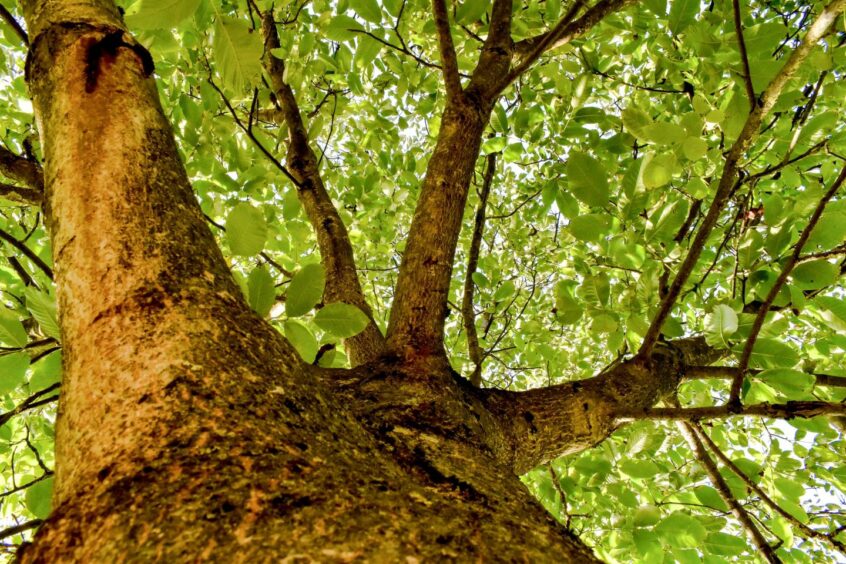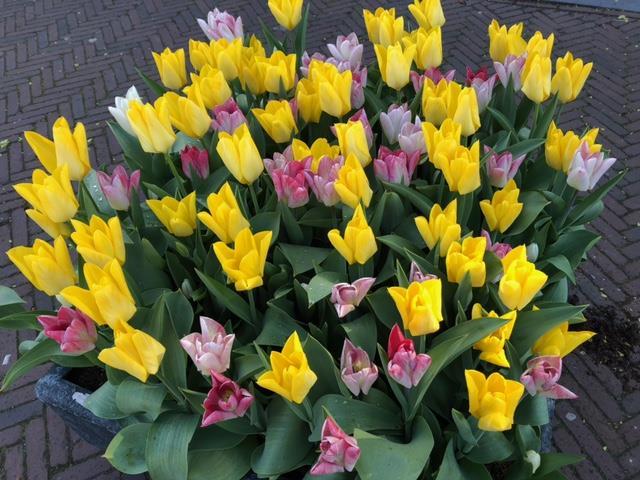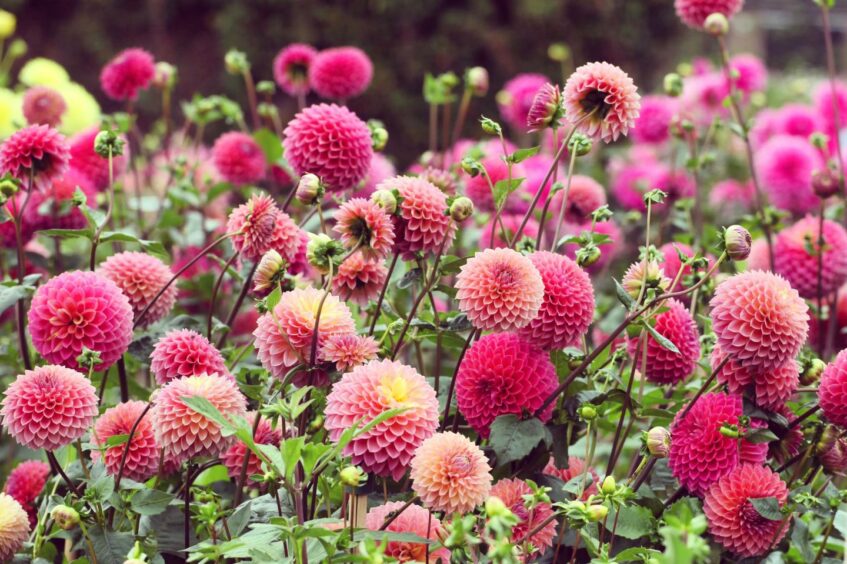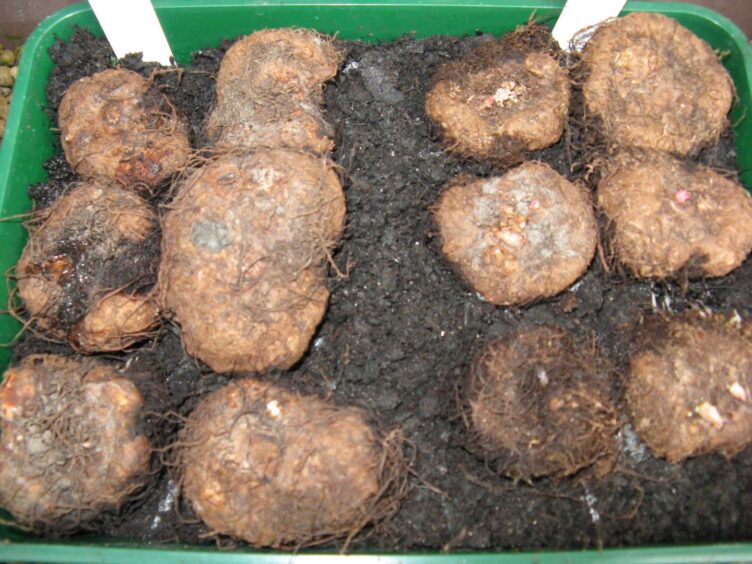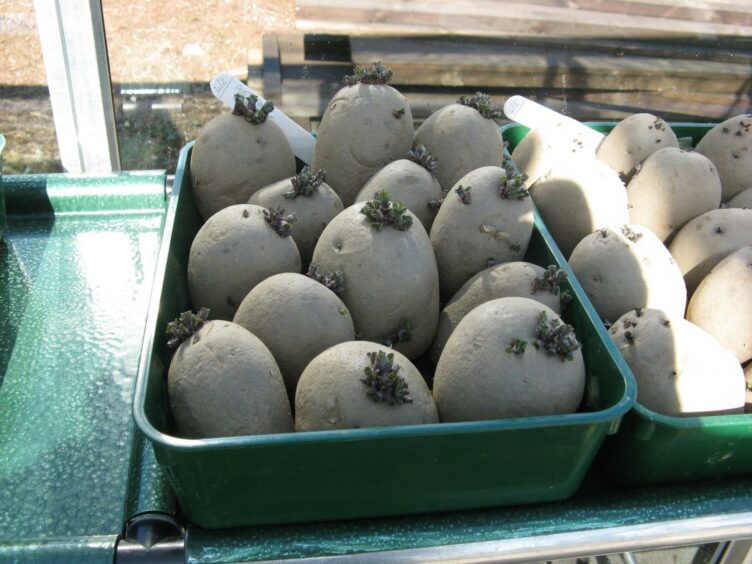Let me start this week with a puzzle, in the form of a question posed about hydrangeas.
During a recent question session a lady asked me if hydrangeas can change their flower colour.
Answer? Yes – in a peculiar set of circumstances.
Acid, neutral and alkaline
Perhaps you have admired a blue-flowered hydrangea and further investigation reveals that it is growing in an acid soil, the fact is that it will also have a measure of available aluminium in it.
The same variety grown in soil which is neutral to slightly alkaline (chalky) contains less available aluminium but it will have pink flowers.
Soil chemistry lesson over but that just reveals one of the intriguing things about gardening which I believe is responsible for us developing a lifelong interest in it. The fact is, you will never know it all.
I’m still learning and I started making my notes in the early 1950s.
Remember that fascinating tale, told by Chris Beardshaw at a Beechgrove GQT, about the walnut trees?
The cast leaves, lying around the base of the tree in the autumn, are poisonous to other plants, nothing will grow there.
Why? To prevent competition. If the leaves drift on to garden plants nearby, they will die off. That was news to me at the time.
Mind you, there may not be that many walnut trees in this part of the world for such a characteristic to be generally known.
But I had spent more than 20 years south of the border where the walnut trees are to be seen more often and it came as a surprise to me.
Integrated Pest Management
Rather a long intro but conveniently, it leads me on to another topic, particularly relevant to all gardeners and certainly featured in specialist gardening magazines – have you seen the letters IPM used in relation to plants?
The full title is Integrated Pest Management.
In that title the word “pest” includes diseases and other problems affecting plants. Basically the subject has evolved to enable us to grow plants successfully without using pesticides or damaging the environment, simply by upping our game and making a better job of growing them.
Get the balance right and we have a healthy plant better able to fight off attacks by other organisms.
The development of IPM is an endeavour to reduce the need for man-made chemical solutions to these plant problems which in themselves are harming our environment.
One of the most widespread examples would be chemical weed control.
IPM is not just about pests and diseases, it is about preparing and maintaining the growing conditions – to give plants the best chance of succeeding.
Know your plants
Although it is all very technical, basically you simply have to get to know your plants intimately to go with IPM.
Example – if a plant needs all the sunshine it can get (you learn that by seeking its origins), and you have it planted in a part of the garden which is slightly shady, that plant will not perform to its full potential.
As a result of being slightly “off colour” (good that, eh?) and as a result of it is not living up to its potential, it will be more susceptible to the plant equivalent of colds and flu.
Experienced gardeners kind of know that, for dahlias to perform well, they need good soil conditions coupled with a sunny location, and as I mentioned last week, alpine plants need good drainage.
All that is linked to the IPM story which goes a bit further. Developing good husbandry skills, like practising rotations in the vegetable garden to help keep soil-borne diseases within bearable limits or seeking controls to reduce insect damage but which do not harm the environment.
A classic of the latter being the use of yellow sticky traps to control whitefly, whilst being careful not to get stuck on them yourself – not only embarrassing but it’s ruddy awkward to escape, if you get caught.
Herbicides
With current trends to ban certain herbicides, compost ingredients and powerful artificial pest and disease control chemicals, there are tough times ahead for gardeners – methinks a study of the principals of IPM are going to become rather important.
Get set for summer
Back to business – whilst we await the spring bedding coming to a colourful climax, we have to be preparing for summer.
It is time to take the begonia tubers out of storage and set them up in the light to start sprouting.
A frost-free situation is fine but not too hot, you want them to produce short sturdy growth.
While you are at it, the same applies to chitting the tatties.
Same conditions apply – the last thing you want is for the tubers to produce thin lanky shoots which will break off when they’re planted out in the drills in a few weeks’ time.
